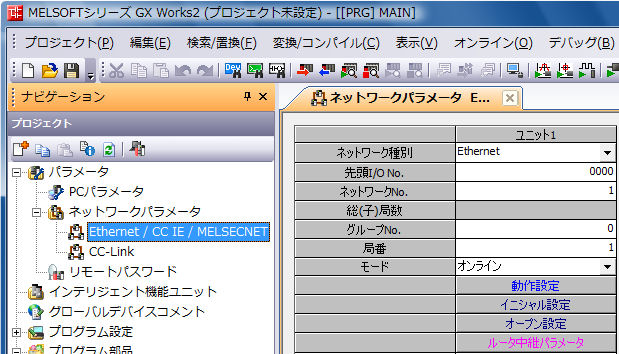
 Select PLC side I/F Serial Setting: Serial USB. Not an expert in Mitsubishi, just started learning the basics. Just all a sudden when I try to edit yesterday I get this error. There had been no changes to the PLC after that. These are all limited to linear networks since an underlying assumption of their derivation is that any given circuit condition is a linear superposition of various short-circuit and open circuit conditions.I am trying to online edit a program in a MELSEC QCPU, using GX Works2, but I keep getting this error "A file which does not exist in the PLC was specified" įew weeks ago I had just online edited the same program in the same PLC with the same steps with no problem. The common models that are used are referred to as z-parameters, y-parameters, h-parameters, g-parameters, and ABCD-parameters, each described individually below. In two-port mathematical models, the network is described by a 2 by 2 square matrix of complex numbers. The analysis of passive two-port networks is an outgrowth of reciprocity theorems first derived by Lorentz. Any linear circuit with four terminals can be regarded as a two-port network provided that it does not contain an independent source and satisfies the port conditions.Įxamples of circuits analyzed as two-ports are filters, matching networks, transmission lines, transformers, and small-signal models for transistors (such as the hybrid-pi model). For example, transistors are often regarded as two-ports, characterized by their h-parameters (see below) which are listed by the manufacturer.
Select PLC side I/F Serial Setting: Serial USB. Not an expert in Mitsubishi, just started learning the basics. Just all a sudden when I try to edit yesterday I get this error. There had been no changes to the PLC after that. These are all limited to linear networks since an underlying assumption of their derivation is that any given circuit condition is a linear superposition of various short-circuit and open circuit conditions.I am trying to online edit a program in a MELSEC QCPU, using GX Works2, but I keep getting this error "A file which does not exist in the PLC was specified" įew weeks ago I had just online edited the same program in the same PLC with the same steps with no problem. The common models that are used are referred to as z-parameters, y-parameters, h-parameters, g-parameters, and ABCD-parameters, each described individually below. In two-port mathematical models, the network is described by a 2 by 2 square matrix of complex numbers. The analysis of passive two-port networks is an outgrowth of reciprocity theorems first derived by Lorentz. Any linear circuit with four terminals can be regarded as a two-port network provided that it does not contain an independent source and satisfies the port conditions.Įxamples of circuits analyzed as two-ports are filters, matching networks, transmission lines, transformers, and small-signal models for transistors (such as the hybrid-pi model). For example, transistors are often regarded as two-ports, characterized by their h-parameters (see below) which are listed by the manufacturer. 
It also allows similar circuits or devices to be compared easily. This allows the response of the network to signals applied to the ports to be calculated easily, without solving for all the internal voltages and currents in the network. A two-port network is regarded as a " black box" with its properties specified by a matrix of numbers. The two-port network model is used in mathematical circuit analysis techniques to isolate portions of larger circuits.

In a two-port network, often port 1 is considered the input port and port 2 is considered the output port. The ports constitute interfaces where the network connects to other networks, the points where signals are applied or outputs are taken. Two terminals constitute a port if the currents applied to them satisfy the essential requirement known as the port condition: the electric current entering one terminal must equal the current emerging from the other terminal on the same port.

Notice the port condition is satisfied: the same current flows into each port as leaves that port.Ī two-port network (a kind of four-terminal network or quadripole) is an electrical network ( circuit) or device with two pairs of terminals to connect to external circuits. Figure 1: Example two-port network with symbol definitions.








 0 kommentar(er)
0 kommentar(er)
